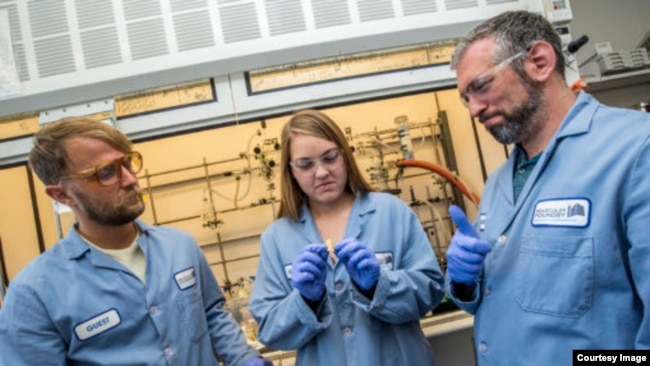Επιστήμονες του University of Cambridge δημιούργησαν μια πολυμερή ταινία μιμούμενοι τις ιδιότητες του ιστού αράχνης- ενός από τα ισχυρότερα υλικά που υπάρχουν στη φύση. Το νέο αυτό υλικό είναι το ίδιο δυνατό με πολλά κοινά πλαστικά που χρησιμοποιούνται σήμερα, και θα μπορούσε να χρησιμοποιηθεί για την αντικατάστασή τους σε πολλά κοινά οικιακά προϊόντα.
Το εν λόγω υλικό δημιουργήθηκε μέσω μιας νέας μεθόδου για τη συναρμολόγηση φυτικών πρωτεϊνών σε υλικά που μιμούνται τον ιστό σε μοριακό επίπεδο. Η συγκεκριμένη, ιδιαίτερα αποδοτική από ενεργειακής πλευράς, μέθοδος, που χρησιμοποιεί βιώσιμα συστατικά, έχει ως αποτέλεσμα μια ταινία που θυμίζει πλαστικό και μπορεί να παραχθεί σε βιομηχανική κλίμακα. Στο πολυμερές μπορούν να προστεθούν «δομικά» χρώματα και επίσης μπορεί να χρησιμοποιηθεί για τη δημιουργία αδιάβροχων επικαλύψεων.
Το υλικό αυτό επιτρέπει οικιακή κομποστοποίηση, τη στιγμή που άλλα είδη βιοπλαστικών απαιτούν βιομηχανικές εγκαταστάσεις για την αποσύνθεσή τους. Επιπρόσθετα, δεν χρειάζεται χημικές τροποποιήσεις στα φυσικά του δομικά συστατικά, έτσι ώστε να μπορεί να αποσυντίθεται με ασφάλεια στα περισσότερα φυσικά περιβάλλοντα.
Το προϊόνα αυτό θα αξιοποιηθεί εμπορικά από την Xampla, μια spin-out εταιρεία του University of Cambridge. Η εταιρεία πρόκειται να παρουσιάσει μια σειρά από σάκους και κάψουλες μιας χρήσης αργότερα μέσα στο έτος, για την αντικατάσταση του πλαστικού που χρησιμοποιείται σε καθημερινά προϊόντα. Τα αποτελέσματα της σχετικής έρευνας δημοσιεύονται στο Nature Communications. ΝΑΥΤΕΜΠΟΡΙΚΗ
Plastic remains one of the most-used materials for making many of the things we use in our everyday lives.
Things made of plastic can be very strong and last a long time. They also do well in extreme heat and cold. Plastic is also much lighter than metal and can easily be formed into different shapes. This makes the material ideal for countless uses across many different industries.
But the widespread use of plastics across the world is causing major problems for the environment. Plastic material is flooding landfills and causing severe damage in the world’s oceans.
Plastics can take hundreds of years to break down on their own. Very few kinds are highly recyclable. This is because of the way plastics are formed.
It has been estimated that even the most reusable kinds of plastic can only be recycled at a rate of 20 to 30 percent. Even when recycling is possible, the process is costly, can use a lot of energy and, in many cases, produces poor-quality materials.
But a team of researchers working at the U.S. Department of Energy says it has created a kind of plastic that could lead to products that are 100 percent recyclable.
The team works at the Department of Energy’s Lawrence Berkeley National Laboratory in California. It recently reported the discovery in a study in the journal Nature Chemistry.
The researchers say the new material is a plastic polymer called polydiketoenamine, or PDK. The team reports that the material can be broken down in parts at the molecular level.
It can then be built up again to form plastics of different shapes, textures, colors and more. The researchers say this process can be repeated over and over again -- without the plastic material losing any performance or quality.
“Most plastics were never made to be recycled,” lead researcher Peter Christensen said in a statement. Christensen works at Berkeley Lab’s Molecular Foundry center. “But we have discovered a new way to assemble plastics that takes recycling into consideration from a molecular perspective.”






0 Post a Comment:
Δημοσίευση σχολίου